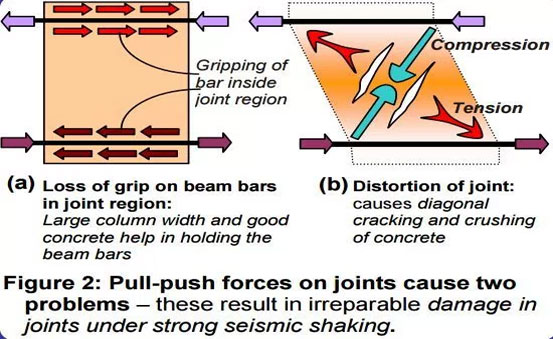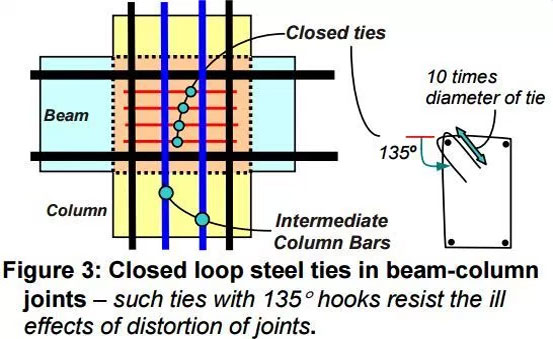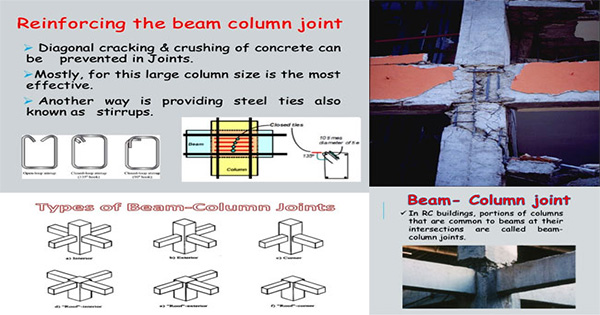How to withstand earthquakes with beam column joints

USEFULLNESS OF BEAM-COLUMN JOINTS
Beam-column joints belong to the parts of columns in RC buildings which are generally found to beams at their intersections. As their component materials contain restricted strengths, the joints include restricted force carrying strength. Joints get damaged significantly if forces greater than these are employed throughout earthquake. It becomes complicated to patch-up defective joints and therefore, take proper care to get rid of damage. Therefore, the design process should be started for beam-column joints to withstand earthquake effects.

EARTHQUAKE BEHAVIOUR OF JOINTS
Under earthquake shaking, the beams which are located adjacent to a joint are dependent on moments in the similar (clockwise or counter-clockwise) direction. In these moments, the top bars available in the beam-column joint are taken in one direction and the bottom ones in the direction contrary to the other. The bond stress is used to balance these forces which are produced among concrete and steel in the joint region. If the column is not sufficiently broad or if the concrete strength in the joint is insufficient, inadequate grip of concrete occurs on the steel bars. Under this situation, the bar slips within the joint region, and the load bearing strength of beams is reduced.

Besides, with the reaction of the above pull-push forces at top and bottom ends, joints have to encounter geometric distortion; one diagonal length of the joint extends and the other condenses. If the column cross-sectional size is insufficient, the concrete in the joint develops diagonal cracks.
REINFORCING THE BEAM-COLUMN JOINT
Often, diagonal cracking & crushing of concrete occurs in joint region but it should have been avoided to sustain good earthquake performance of RC frame buildings. To make it possible, it is recommended to employ large column sizes. Besides, closed-loop steel ties should be placed at short spacing around column bars (Figure 3) to retain concrete in joint region jointly and to avoid shear forces. Intermediate column bars can also be applied in restraining the joint concrete and withstanding horizontal shear forces.

But additional skill is required to arrange closed-loop ties in the joint. As per Indian Standard IS:13920-1993, it is suggested to carry on the transverse loops around the column bars via the joint region. Practically, it is acquired by developing the cage of the reinforcement (both longitudinal bars and stirrups) of all beams at a floor level that can be arranged on top of the beam formwork of that level and deflated into the cage. But it can’t be done specially if the beams are extended and the whole reinforcement cage turn into heavy.
To gather more information, click on the following link.
www.civilblog.org

